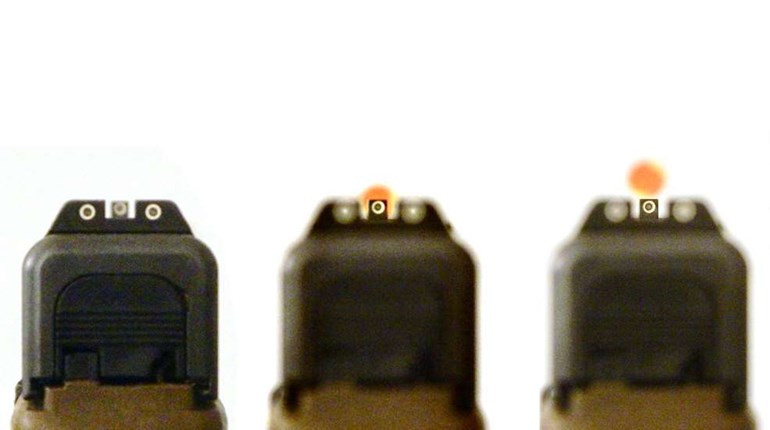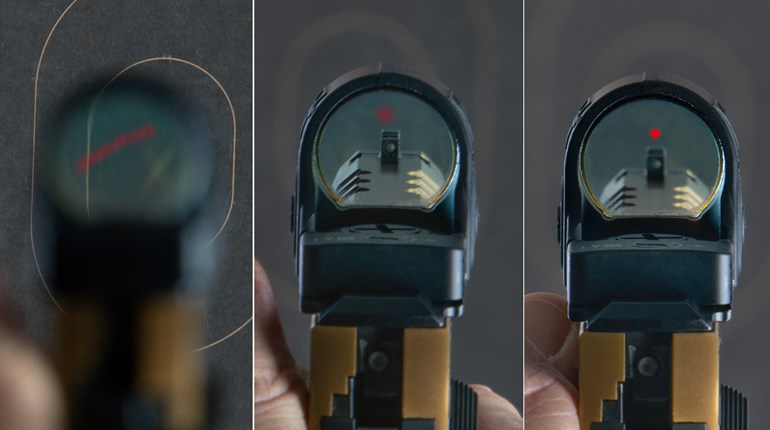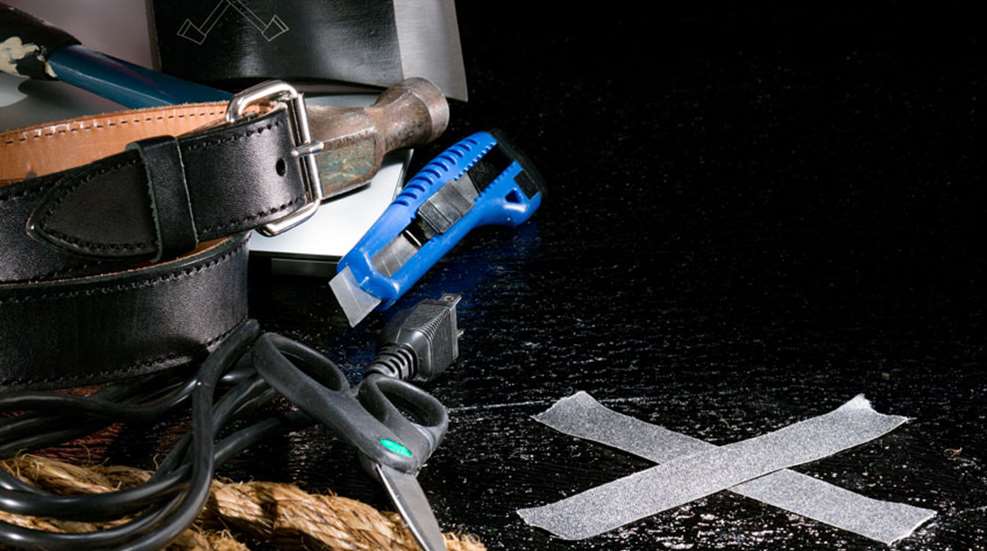
This article appeared originally as "Exit or Equalize" in the Handbook section of the March 2017 issue of Shooting Illustrated. To subscribe to Shooting Illustrated magazine, visit the NRA membership page here and select Shooting Illustrated as your member magazine.
I teach firearm courses nationwide, and at the start of one of my most recent, intermediate-level shooting classes, I posed the question: “Most of you are licensed to carry a concealed firearm. Can anyone tell me where you may NOT carry a firearm?” Answers varied from federal buildings such as post offices and courthouses to airports, hospitals and businesses where carrying a firearm on the premises is prohibited by the proprietor.
Students took pause at my next question “Although armed, when may you NOT be able to take the shot?” Answers ranged from no appropriate backstop to not enough time or enough distance between yourself and the threat to handle your cover garment, defeat any firearm-retention devices on your holster, present your gun toward the threat and make accurate combat-effective round placement.
In the event you find yourself directly in harm’s way and you don’t have your gun or can’t take the shot, you have only one of two viable tactical solutions: either get off that fateful “X” (exit) or put something in your hands usable as a weapon of opportunity to equalize the use of force (equalize).
In the world of professional executive protection (EP) we know that “moving off the X” is the best tactical solution to a worse-case scenario. First off, the term “X” comes from filmmaking back in the day, when a piece of rigger’s tape was placed on stage in the shape of the letter X. Actors were told to stand on that X, because that’s where the cameras, lighting and sound booms were directed. Applied to EP, the X is precisely to where the bullets and bad guys are moving—the very last place you want to be.
Your absolute best option is to exit—move off that X—because if you don’t have or can’t get to your gun and 2.8 assailants (national average) are about to chop your head off with a machete, you’re going to get hurt standing there armed with nothing but your empty hands and a nervous smile.
Exiting from the attack area is your very best option, but if you don’t have the time, space or opportunity to get away (or you simply choose to stay and play, which is not advisable), then you will be challenged with use of force by one or more armed attackers. Unable to exit, your only remaining option is to get something in your hands to equalize the force being used against you.
Getting something in your hands means literally anything that’s not anchored to the ground that you can lift high enough to use in self-defense against your assailant(s) with the purpose of temporarily immobilizing them so you can either get to your gun (and make a shot) or exit off that X to safety.
If you’re unable to utilize your firearm or to exit, your next best bet is to reach for a non-ballistic, hand-held weapon of opportunity, or an “improvised weapon,” instantly accessible to you and in your immediate environment.
A non-ballistic or improvised weapon can be defined as any object not nailed to the floor, fabricated out of metal, wood, plastic, glass, wire or any other material capable of holding an edge, point or rigidity that can be used in self-defense to stop a violent physical attack.
This can include, but is not limited to, baseball bats, saw blades, screwdrivers, broken glass, bungee cords, razor blades, tire irons, metal pipes, belts and belt buckles, coat hangers, shovels, lengths of chain, box cutters, closet dowels, folding knives, leather awls, hammers, sharpened credit cards, syringes, piano wire, improvised daggers, axes and common kitchen knives. Non-ballistic weapons can also include your fists, knees, elbows, shins and feet. As you can see, if you put some thought into it, you have a multitude of options (some better than others).
Non-ballistic weapons can be grouped into four general categories: edged weapons, impact weapons, flexible weapons and personal weapons. Let’s take a closer look at these categories.
Edged Weapons
This category includes knives, razor blades, nails, sharpened credit cards, metal shanks, pens, scissors, pencils, broken glass, improvised edged weapons fashioned from some common object such as a coat hanger or coffee can, shower-curtain holder, kitchen utensils, screwdrivers and any object with an edge or a point that can cut or puncture. Again, this category of improvised weapons is the most versatile, as the edge and tip are two surface areas of a non-ballistic weapon that can be applied in the same attack and at the same time. No other type of improvised weapon can claim this capability.
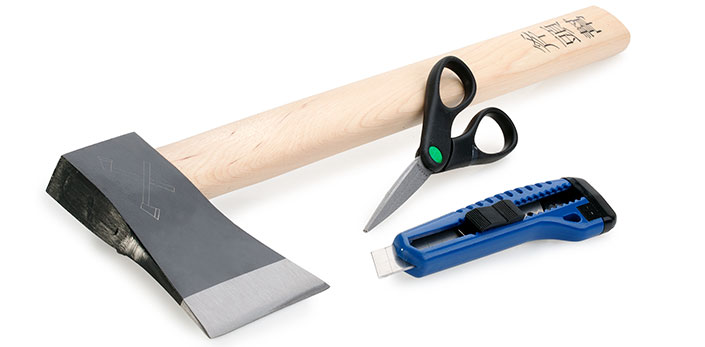
Impact Weapons
Here, you have options including broom handles, baseball bats, telephones, tire irons, lumber, ax handles, high heels, rocks, tree branches, pipes, sticks, boots, toilet plunger handles, crowbars, closet poles and any other ridged object that can withstand substantial impact or shatter bone. This is the second and still a very effective category of non-ballistic weapons, as they can cause structural damage and render your assailants incapacitated by impact alone. Plus, they are often longer than edged weapons, providing greater effective range between you and your attacker(s).
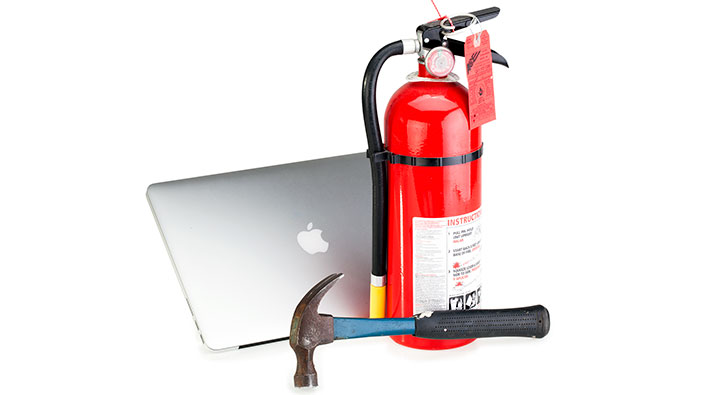
Flexible Weapons
This category consists of computer cables, ropes, piano wire, belts, bungee cords, scarves, telephone cords, chains, trashcan liners and any object with flexibility—anything that can be used to establish a choke hold, cause asphyxiation or crush the trachea. Although not as common as the categories of edged and impact weapons, this category of improvised weapons demands an equal level of respect. After all, do you know what the primary method of carrying out the death penalty in the United States was until 1936? Hanging by a rope, which is, of course, a flexible weapon.
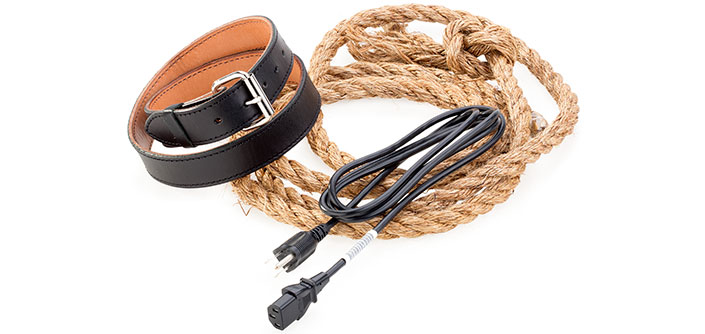
Personal Weapons
Here, we’re talking about your various parts that can be weaponized: fists, knees, fingernails, shins, elbows, forehead, feet, teeth—any body part that can emulate the functionality of edged, impact or flexible weapons and inflict damage. It’s far easier to stop a threat with an edged, impact or flexible weapon than it is with your feet, but it can be done.
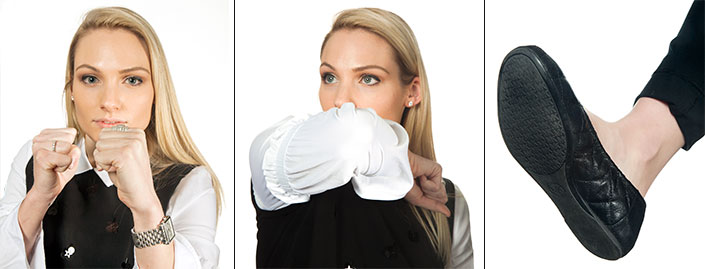
To effectively employ a non-ballistic weapon from any category, you must first be able to identify and then utilize such common items that will give you the decisive advantage in a violent physical encounter. What must you know to identify, access and effectively deploy every-day items in your environment to defend yourself, if necessary? It all starts with a Resource Assessment Listing. What is that and how can it give you the advantage in a real-world scenario?
A Resource Assessment Listing is nothing more than a mental checklist you create internally and on the fly when you are faced with a potential threat. You walk into a room and identify any loose, accessible item you can instantly grasp with your bare hands that, upon your rapid consideration, meet all three of these criteria: 1. Proximity; the nearer to you the better. You may need to move closer to it. 2. Speed; how quickly can you get it into your hand? Is it heavy, light, compact, clumsy? 3. Deployability; how effectively can this object be utilized in self-defense? For example, a pillow as an impact weapon is probably not your best choice.
Let’s take a minute to run a cerebral training exercise. While you’re reading this, take a walk with your mind’s eye into your kitchen and identify an edged weapon. Where is it? Where would you need to be standing so that you could get it in either hand? How quickly could you do this? Can it be used effectively for self-defense as a non-ballistic weapon to stop the threat?
Next, scan the same room again using your mind’s eye and identify an impact weapon. Where is it? Where would you need to be standing so that you could get it in either hand? How quickly could you do this? Can it be used effectively for self-defense as a non-ballistic weapon to stop the threat?
Then, scan the room again using your mind’s eye and identify a flexible weapon. Where is it? Where would you need to be standing so that you could get it in either hand? How quickly could you do this? Can it be used effectively for self-defense as a non-ballistic weapon to stop the threat?
Lastly, of all three categories (edged, impact, flexible) which one do you think would be the very best option to stop a physical threat?
The next level of your training is to run a Resource Assessment Listing at work, a restaurant, business meeting or dinner party. Nobody else needs to know what you’re doing, just smile and figure out how to stop a threat if you had to with whatever is available to you in your immediate environment.
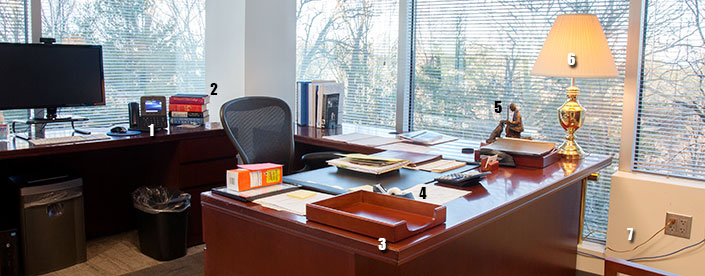
Deploying a non-ballistic weapon in lieu of your firearm is simply a matter of picking up the readily accessible weapon of opportunity with your hand(s), and immediately applying it to the nearest bad guy. Your objective is not to take on a single or multiple assailants who may be armed, because there may be more of them than there are of you, plus they may be younger, harder and stronger.
Should you find yourself between a rock and a hard place without a firearm, for what-ever reason, or in a situation where you need your gun, but may not be able to get to it or get it drawn, you have another viable option that can give you the tactical advantage. That advantage is effective when applied, and only requires you to remember one simple concept that may one day save your bacon: exit or equalize.












